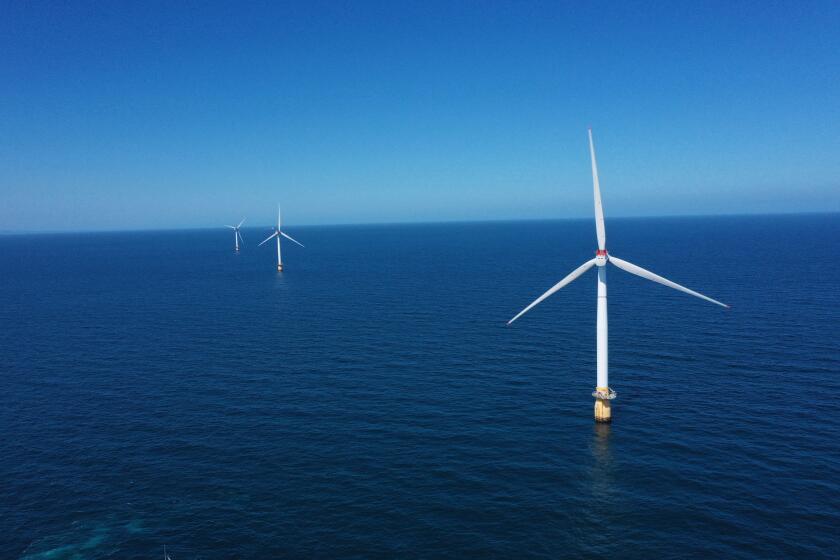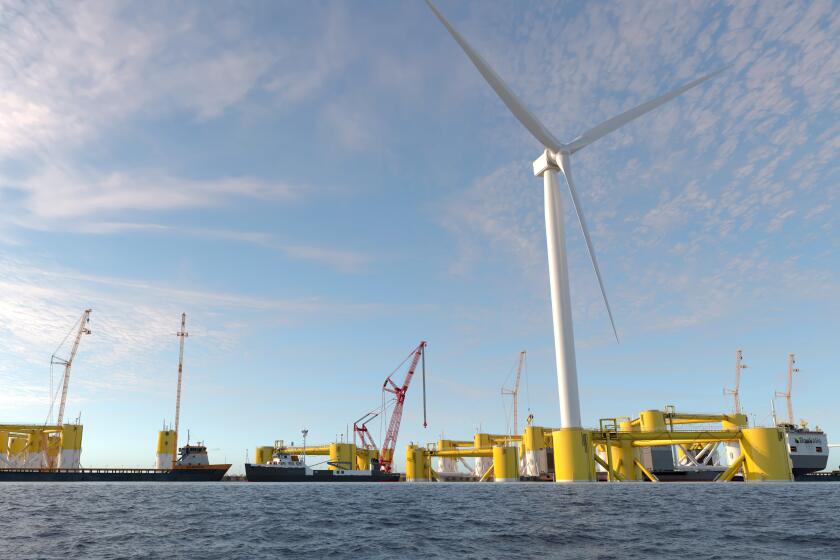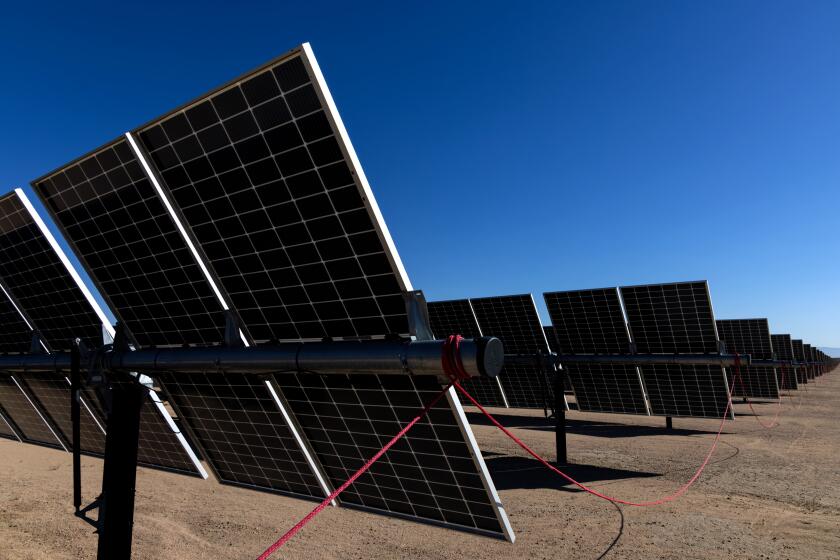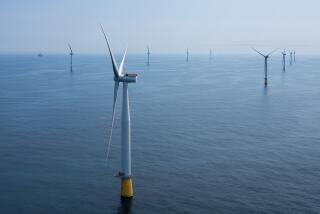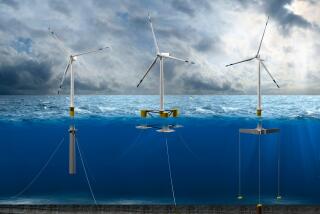U.S. power grid receives its first electricity from commercial offshore wind project
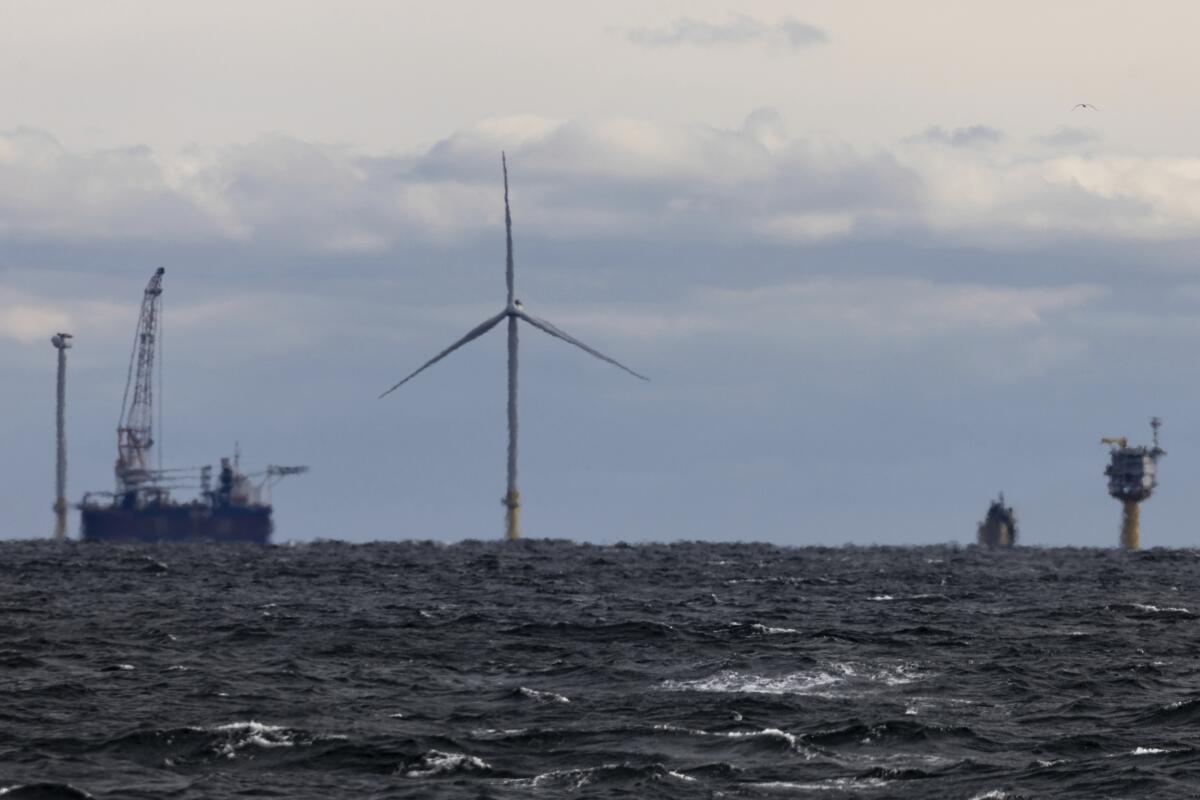
NEW LONDON, Conn. — Despite some recent financial setbacks, U.S. offshore windpower hit a milestone this week: An 800-foot-tall turbine is now sending electricity into the grid from a commercial-scale offshore wind farm on track to become the country’s first.
The moment was years in the making and at the same time a modest advance in what experts say needs to be a major buildout of this type of clean electricity to address climate change.
On Wednesday, Danish wind energy developer Ørsted and the utility Eversource announced the first production of electricity from what will be a 12-turbine wind farm called South Fork Wind, 35 miles east of Montauk Point, N.Y. It will be the state’s first offshore wind farm.
Ørsted and Eversource met Wednesday with New York officials to celebrate the milestone in East Hampton, where the wind farm connects to the onshore power grid. They say the achievement builds a foundation for other large U.S. offshore wind farms that will follow.
So far, two of the 11-megawatt turbines are up. One is still undergoing testing, after which it can begin producing power. When the other 10 are spinning and South Fork opens by early next year, it will be able to generate 132 megawatts of offshore wind energy to power more than 70,000 homes.
The first power announcement is “an incredible moment in the American clean-energy story,” said Stephanie McClellan, executive director of the nonprofit Turn Forward, which advocates for offshore wind. She said South Fork would be a source of clean, reliable, domestically produced energy.
A deal struck by Gov. Gavin Newsom and state lawmakers could lead to huge floating turbines off the coast.
“This is just the beginning of what offshore wind can do,” she said in a statement.
Offshore wind is central to New York’s plan to transition to a carbon-free electricity system by 2040. The state aims to have the equipment installed for nine gigawatts of power from offshore wind by 2035.
“New York’s nation-leading efforts to generate reliable, renewable clean energy have reached a major milestone,” Gov. Kathy Hochul said in a statement Wednesday. “South Fork Wind will power thousands of homes, create good-paying union jobs and demonstrate to all that offshore wind is a viable resource New York can harness for generations to come.”
Some Long Island residents at first objected on environmental and aesthetic grounds to the transmission line running through their community. In a lawsuit, four residents alleged that trenching under roads would spread contaminated groundwater. A judge dismissed their complaint in July.
Pier Wind would generate 20 megawatts of energy for the state, helping California move toward a zero-emission future.
The project has also overcome objections from fishermen and some environmentalists. Fishermen said they were not adequately compensated for their loss of fishing grounds, while the group Save the Bay said the energy project shouldn’t be placed near such a rich diversity of marine life.
Business groups and construction unions backed the project.
Large offshore wind farms have been making electricity for three decades in Europe, and more recently in Asia. The first U.S. offshore wind farm was supposed to be a project off the coast of Massachusetts known as Cape Wind. The application was submitted to the federal government in 2001, but the project collapsed after years of local opposition and litigation.
Turbines began churning off Rhode Island’s Block Island in 2016. But with just five of them, it’s not a commercial-scale wind farm.
The numbers are encouraging for renewable energy. But they don’t tell the full story.
Currently there are two commercial offshore wind farms under construction in the U.S., South Fork Wind and Vineyard Wind. Vineyard Wind will be a 62-turbine wind farm 15 miles off the coast of Massachusetts. It has not started generating power yet, the developer said Monday. They’re installing and testing five turbines first.
At State Pier in New London, Conn., blades and massive tower sections for South Fork are lined up, ready to leave port for the sea where they’ll be erected in the coming weeks. The nacelles that house the generator for each wind turbine are there, too.
On Monday, a barge carrying three blades and a nacelle for the third turbine left port. Jeff Martin of Eversource said it was a “joy” to see the industry finally move from concept to fruition in the U.S., to help reduce the nation’s dependence on fossil fuels.
“Finally we’re taking this step to catch up with the rest of the world and do our part to collectively address climate change,” said Martin, Eversource’s director of business development for the offshore wind group.
Stay tuned for more Repowering the West
Get our Boiling Point newsletter for the next installment in this series — and behind-the-scenes stories.
You may occasionally receive promotional content from the Los Angeles Times.
Large, ocean-based wind farms are a linchpin of government plans to shift to renewable energy in populous East Coast states with limited land for wind turbines or solar arrays. The Biden administration aims to power 10 million homes with offshore wind by 2030 and establish a carbon-free electric grid five years later.
But the industry has had hard times recently. Ørsted announced that it was canceling two large offshore wind projects in New Jersey because of problems with supply chains, increased interest rates and a failure to obtain the amount the company wanted in tax credits. Developers in New England also recently canceled power contracts, saying their projects were no longer financially feasible.
Other projects though are advancing. Ørsted is moving forward with Eversource on construction of Revolution Wind, Rhode Island and Connecticut’s first utility-scale offshore wind farm. The 704-megawatt project is expected to power roughly 400,000 homes. Tower sections, blades and nacelles are expected to begin arriving in New London as early as spring.
